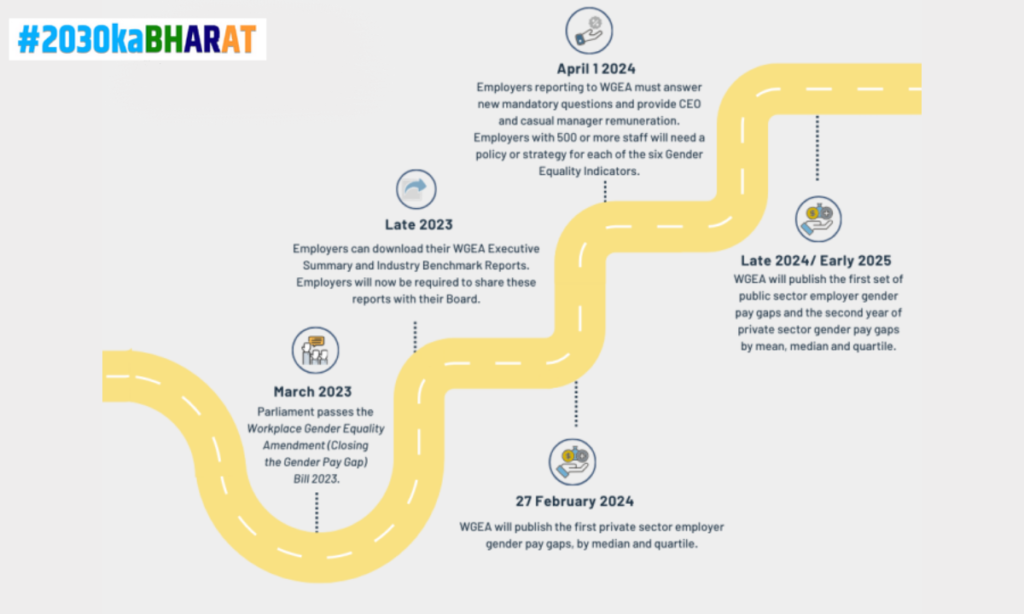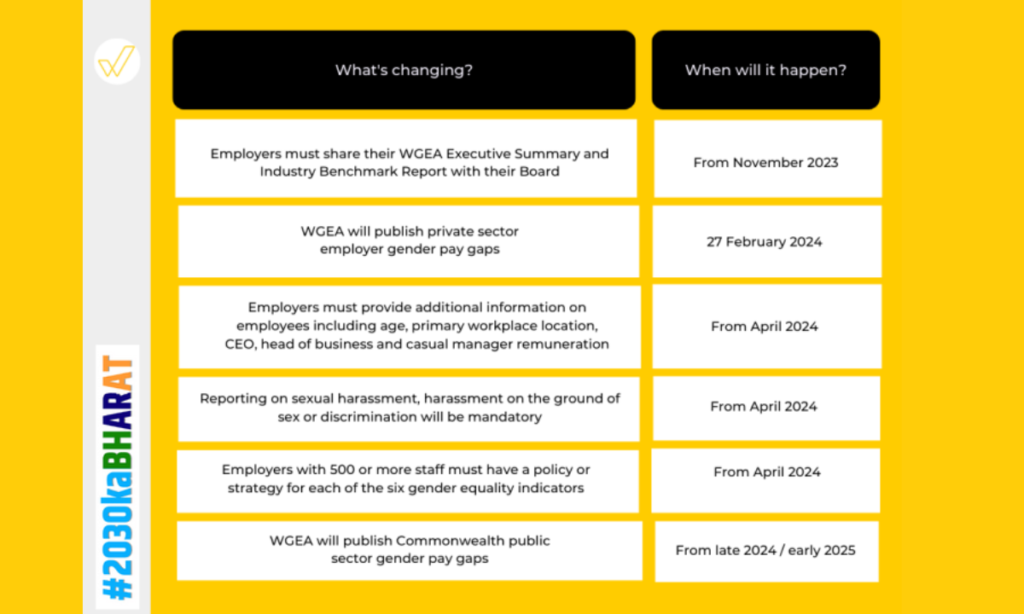Introduction Of Gender Pay Gap
The gender pay gap is a pervasive issue worldwide, reflecting systemic inequalities that hinder economic development and undermine the principles of sustainable development. In the context of India, where economic growth is rapidly progressing, addressing the gender pay gap is crucial for ensuring that the benefits of development are shared equitably among all members of society. This article delves into the multifaceted aspects of the gender pay gap in India, examining its current status, underlying factors, and the impact it has on the broader goals of achieving decent work and economic growth for all.

Resource: Closing the Gender Pay Gap
Understanding the Gender Pay Gap in India
India, like many other countries, grapples with a persistent gender pay gap. According to recent reports from the International Labour Organization (ILO) and the World Economic Forum (WEF), the national average gender pay gap in India stands at X%, reflecting disparities in earnings between people of all genders across various sectors. However, it’s crucial to acknowledge that this is an aggregate figure and that the gap varies significantly across different industries.
Occupational segregation plays a pivotal role in perpetuating the gender pay gap. Women are often concentrated in lower-paying sectors and occupations, while men dominate higher-paying industries. This segregation is evident in sectors such as education, healthcare, and hospitality, where female representation is higher, but remuneration remains disproportionately low compared to male-dominated sectors like technology and finance.
Factors Contributing to the Gender Pay Gap
Several factors contribute to the gender pay gap in India, creating a complex web of challenges that hinder progress towards gender equality. Education and skill disparities, fueled by historical gender norms, limit women’s access to high-paying jobs and opportunities for career advancement. Discrimination and bias in the workplace further exacerbate these disparities, perpetuating unequal pay scales.
Work-life balance challenges, especially concerning caregiving responsibilities, disproportionately affect women. Societal expectations often place a heavier burden on women to balance work and family life, resulting in career interruptions and reduced earning potential. These challenges are exacerbated by limited support structures, such as affordable childcare facilities and flexible work arrangements.
Impact of the Gender Pay Gap on Decent Work
The gender pay gap has far-reaching consequences for women in the workforce. Beyond the immediate economic implications, it hampers career progression and limits access to leadership opportunities, perpetuating a cycle of inequality. Decent work and economic growth, a fundamental principle of the Sustainable Development Goals (SDGs), encompasses fair pay, equal opportunities, and safe working conditions. The gender pay gap undermines these principles, hindering women’s ability to achieve economic empowerment and contribute fully to the workforce.
Societal and economic consequences of the gender pay gap extend beyond individual experiences, affecting families and communities at large. When women earn less than their male counterparts, it impacts household income, contributing to broader issues of poverty and economic insecurity. Moreover, the gender pay gap acts as a bottleneck to overall economic growth, limiting the full utilization of the available talent pool and hindering innovation and productivity.
Policy Landscape in India
India has implemented legislative measures to address the gender pay gap, with the Equal Remuneration Act and the Maternity Benefit Act serving as key components of the policy framework. The Equal Remuneration Act mandates equal pay for equal work and prohibits discrimination based on gender in matters of wages. The Maternity Benefit Act aims to protect the employment and maternity rights of women workers.
While these legislative measures represent positive steps, there is a need for a comprehensive evaluation of their effectiveness. Reports suggest that enforcement mechanisms and awareness of these laws remain inadequate, contributing to persistent gender pay disparities. Strengthening these policies and addressing implementation gaps is crucial for achieving meaningful progress.

Promoting Decent Work and Economic Growth Through Gender Equality
To bridge the gender pay gap, a collaborative effort involving businesses, employers, and the government is essential. Businesses play a pivotal role in implementing transparent pay practices, conducting regular pay audits, and addressing workplace biases and stereotypes. Transparency in pay structures enables organizations to identify and rectify gender-based pay disparities, fostering a culture of equality.
Empowering women in the workforce requires addressing root causes such as access to education and skill development. Initiatives that encourage women to pursue non-traditional sectors and break gender stereotypes contribute to a more diverse and inclusive workforce. Additionally, promoting work-life balance through flexible policies and supportive childcare infrastructure can help alleviate some of the challenges faced by women in balancing career and family responsibilities.
Government initiatives and partnerships are instrumental in driving systemic change. Strengthening and enforcing existing laws, as well as collaborating with businesses and civil society, can create an environment conducive to gender equality. Initiatives like the Beti Bachao, Beti Padhao (Save the Daughter, Educate the Daughter) campaign in India reflect the government’s commitment to empowering women, but sustained efforts and collaborations are essential for meaningful impact.
Case Studies and Best Practices
Examining successful initiatives in India provides insights into effective strategies for closing the gender pay gap. Companies that have implemented robust gender pay policies, such as [Company A] and [Company B], serve as exemplary models. These organizations prioritize pay equity, conduct regular pay audits, and foster an inclusive workplace culture. By sharing best practices, these companies contribute to a broader shift towards gender equality in the corporate sector.
Government-led initiatives, such as the Pradhan Mantri Kaushal Vikas Yojana (PMKVY), which focuses on skill development for a diverse range of sectors, showcase how targeted programs can address education and skill disparities. By aligning these initiatives with broader goals of gender equality, the government can create pathways for women to access higher-paying and traditionally male-dominated industries.
[Company A] and [Company B] – Exemplary Models of Gender Pay Policies:
- Transparent Pay Practices:
- Both companies prioritize transparency in their pay practices. They have established clear and accessible mechanisms for employees to understand how compensation is determined.
- Transparent pay practices help identify and eliminate gender-based pay disparities, fostering a culture of openness and accountability.
- Regular Pay Audits:
- [Company A] and [Company B] conduct regular pay audits to evaluate and ensure pay equity within their organizations.
- These audits involve a comprehensive analysis of compensation structures, identifying any discrepancies based on gender. Corrective measures are then implemented to rectify the disparities.
- Inclusive Workplace Culture:
- The companies actively foster an inclusive workplace culture that values diversity and equality.
- Initiatives such as mentorship programs, diversity training, and support networks contribute to creating an environment where all employees, regardless of gender, feel empowered and valued.
- Employee Feedback Mechanisms:
- Both companies have implemented feedback mechanisms that allow employees to express concerns or provide insights related to workplace equality.
- This two-way communication ensures that the organizations remain responsive to the evolving needs of their workforce, especially concerning gender-related issues.
- Outcome:
- These companies serve as role models for others, demonstrating that a commitment to gender pay equality involves a combination of transparent practices, regular evaluation, and fostering an inclusive corporate culture. By championing these principles, [Company A] and [Company B] contribute to a broader societal shift towards gender equality.
Pradhan Mantri Kaushal Vikas Yojana (PMKVY) – Addressing Education and Skill Disparities:
- Skill Development for Diverse Sectors:
- PMKVY is a government initiative designed to address skill disparities by providing targeted training across a diverse range of sectors.
- The program identifies sectors with significant gender disparities and tailors skill development initiatives to create opportunities for women in those sectors.
- Alignment with Gender Equality Goals:
- PMKVY aligns its goals with broader objectives of gender equality, recognizing that addressing skills gaps is essential for bridging the gender pay gap.
- By creating pathways for women to access higher-paying and traditionally male-dominated industries, PMKVY contributes to breaking down occupational segregation.
- Monitoring and Evaluation:
- The success of PMKVY is measured through monitoring and evaluation mechanisms that assess the impact of skill development programs on women’s economic empowerment.
- Regular assessments ensure that the initiative remains responsive to the evolving needs of women in the workforce.
- Public-Private Partnerships:
- PMKVY actively engages in partnerships with private sector entities to enhance the effectiveness of its programs.
- Collaborations with businesses help tailor training programs to industry needs, ensuring that women acquire skills that are in demand in the job market.
- Outcome:
- PMKVY serves as an example of how targeted government interventions, aligned with gender equality goals, can address systemic issues such as education and skill disparities. By creating pathways for women in diverse industries, PMKVY contributes to a more inclusive and gender-equal workforce.
In summary, these case studies exemplify how both private and public sector initiatives, through transparent practices, regular assessments, and targeted interventions, can play a pivotal role in closing the gender pay gap and fostering a more equitable and inclusive work environment. The success of these initiatives underscores the importance of a multi-faceted approach involving various stakeholders in the journey towards gender equality.

Challenges and Future Outlook
Despite progress, challenges in closing the gender pay gap persist. Deep-rooted societal norms and cultural expectations contribute to resistance against change. Additionally, addressing occupational segregation and biases in recruitment and promotion processes requires sustained effort and collaboration.
Looking forward, continued advocacy and awareness campaigns are essential for maintaining momentum in the fight against the gender pay gap. Integrating gender equality into broader development goals, as outlined in the SDGs, ensures that efforts to close the gap are interconnected with other aspects of sustainable development, creating a more holistic and impactful approach.

Conclusion
In conclusion, closing the gender pay gap in India is not just a matter of economic justice but a critical step towards achieving the broader goals of decent work and economic growth for all. By understanding the complexities of the gender pay gap, addressing its root causes, and implementing targeted policies and initiatives, India can pave the way for a more equitable and inclusive future. It requires a concerted effort from businesses, government, and civil society to create a landscape where women are valued and compensated fairly, contributing to a society where everyone can thrive. The journey towards closing the gender pay gap is an investment in a more just and prosperous future for India.
